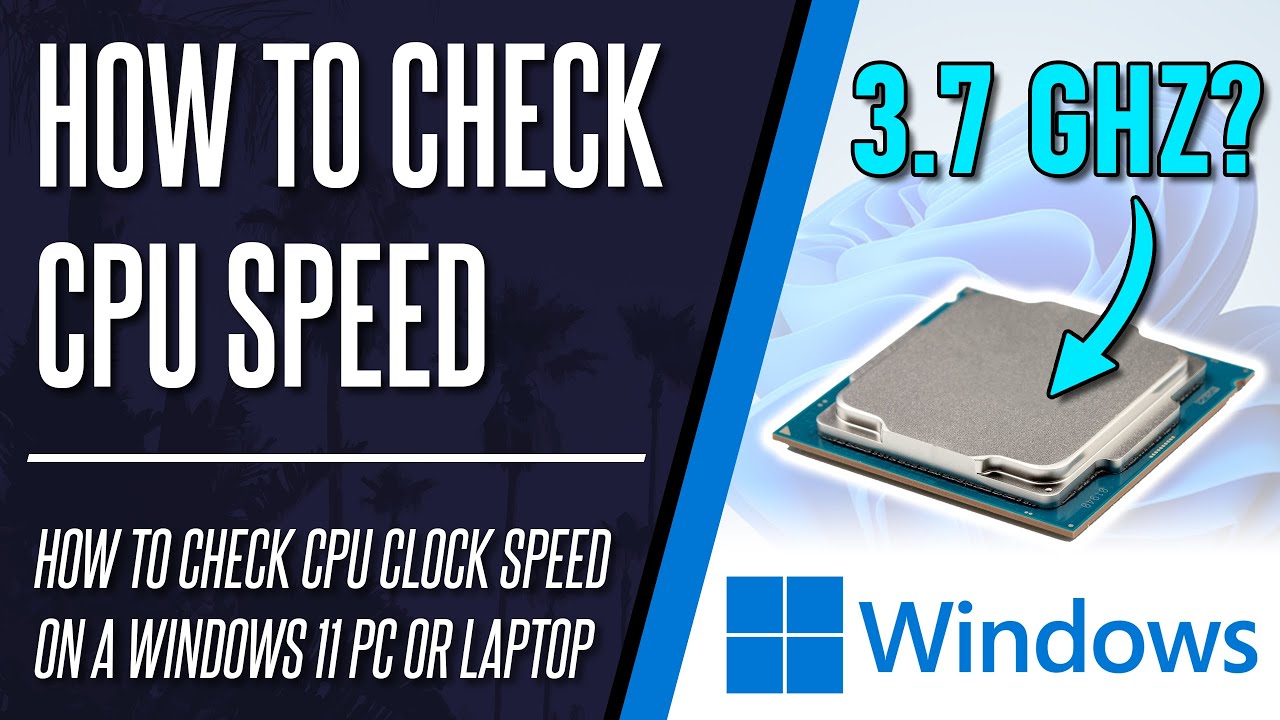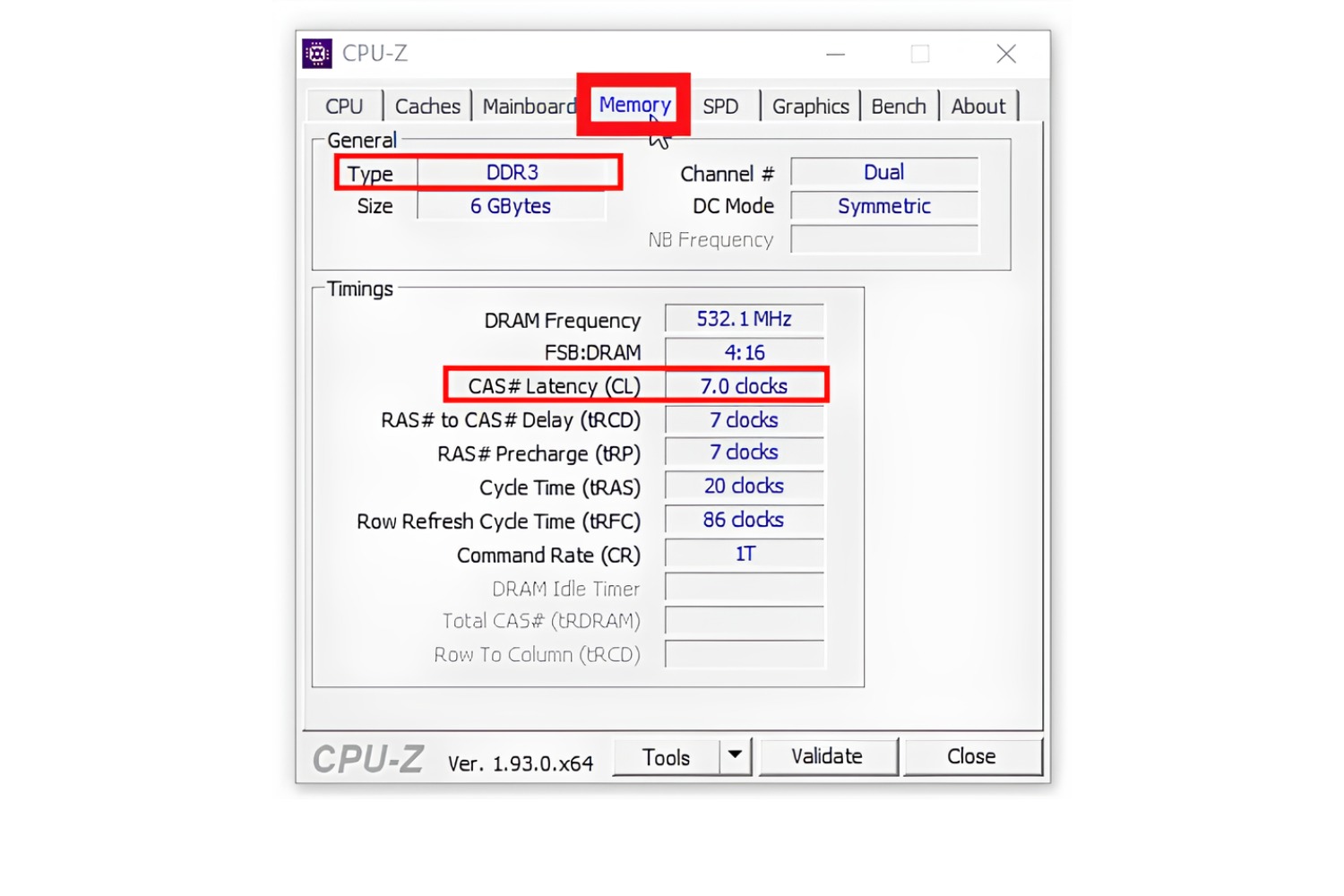Introduction
Welcome to our guide on how to check CPU speed. Whether you’re a tech enthusiast, a gamer, or simply someone curious about their computer’s performance, understanding your CPU’s speed is essential. The central processing unit (CPU) is the brain of your computer, responsible for executing instructions and performing calculations. Knowing the speed of your CPU can help you determine if it meets the requirements for specific tasks or if it’s time for an upgrade.
While there are various methods to check CPU speed, we will explore some of the most common and user-friendly ones in this article. No matter your level of computer expertise, you can follow these steps and easily obtain accurate information about your CPU’s speed.
In the following sections, we will discuss how to check CPU speed using different methods. We will start with the simplest ones that require built-in tools on your operating system and progress to more advanced techniques that involve benchmarking software and third-party tools. Whether you’re using a Windows, Mac, or Linux computer, we’ve got you covered.
It’s important to note that CPU speed is typically measured in gigahertz (GHz), which represents the number of clock cycles a CPU can complete per second. A higher GHz value generally indicates a faster CPU, but it’s not the only factor that determines a processor’s overall performance. Other factors, such as the number of cores and cache size, also play a significant role.
Now, let’s dive into the methods for checking your CPU speed and unleash the power of knowledge when it comes to your computer’s performance!
Method #1: Using Task Manager
One of the easiest ways to check CPU speed on a Windows computer is by using the built-in Task Manager. Task Manager provides real-time information about the performance of your computer, including CPU usage and clock speed.
Here’s how to check CPU speed using Task Manager:
- Press Ctrl + Shift + Esc on your keyboard to open the Task Manager.
- Click on the Performance tab where you’ll find a variety of performance-related data.
- Look for the CPU section, which displays the usage and speed of your CPU.
- Under the Base Speed column, you will see the default clock speed of your CPU. This value represents the speed at which your CPU operates under normal conditions.
Additionally, you may see the Current Speed column, which shows the current clock speed of your CPU. This value may fluctuate based on the CPU’s usage and power-saving settings.
It’s important to note that Task Manager provides a snapshot of your CPU’s speed at a given moment. If you want to get a better understanding of your CPU’s performance over time, you may need to use other methods or tools.
Checking CPU speed using Task Manager is a convenient way to quickly assess your CPU’s current performance. It’s especially useful for monitoring CPU usage and identifying any performance bottlenecks. Whether you’re troubleshooting issues or just satisfying your curiosity, Task Manager is a valuable tool to have at your disposal.
Method #2: Using Command Prompt
Another method to check CPU speed on a Windows computer is by using the Command Prompt. Command Prompt is a powerful command-line tool that allows you to access and execute various commands, including those related to system information and performance.
Follow these steps to check CPU speed using Command Prompt:
- Open the Command Prompt by pressing Windows key + R on your keyboard, typing cmd, and pressing Enter.
- In the Command Prompt window, type the following command and press Enter:
wmic cpu get Name,MaxClockSpeed - After executing the command, you will see the CPU name and the maximum clock speed in megahertz (MHz).
The output will display information about your CPU, including the model name and the maximum clock speed it can achieve. This represents the highest speed at which your CPU can function under optimal conditions.
Using Command Prompt allows you to quickly obtain detailed information about your CPU without any additional tools or software. It’s a straightforward method that provides accurate results, making it ideal for users who prefer the command-line interface.
Command Prompt offers additional commands and parameters to gather more extensive system information. If you’re interested in exploring further, utilize the wmic cpu command with different parameters to extract specific CPU details.
By using Command Prompt, you can easily access valuable information about your CPU’s speed, helping you make informed decisions regarding performance optimizations or hardware upgrades.
Method #3: Using System Information
If you’re using a Windows computer, another simple and built-in method to check CPU speed is by using the System Information utility. System Information provides a comprehensive overview of your computer’s hardware and software configurations, including your CPU’s speed.
Here’s how to check CPU speed using System Information:
- Open the Start menu and search for System Information. Click on the System Information application to open it.
- In the System Information window, navigate to System Summary in the left-hand column.
- Look for the Processor section, where you’ll find information about your CPU, including the name and clock speed.
- Under the Name field, you’ll see the model name of your CPU.
- Next to the Current Clock Speed field, you’ll find the current clock speed of your CPU in gigahertz (GHz).
System Information provides detailed information about your CPU, such as its architecture, manufacturer, and socket type, in addition to the clock speed. This utility offers a user-friendly interface and can be accessed without the need for third-party tools or complex commands.
By using System Information, you can easily determine the exact specifications of your CPU and ensure that it meets the requirements for specific software applications or games. Furthermore, it allows you to keep track of any changes in clock speed due to power-saving features or overclocking.
Alongside checking CPU speed, System Information offers a wealth of other system-related data, making it a valuable tool for troubleshooting and gaining insights into your computer’s overall performance.
Method #4: Using Benchmarking Software
If you want to delve deeper into assessing your CPU’s speed and performance, using benchmarking software is an excellent option. Benchmarking software measures your CPU’s performance by running a series of tests and comparing the results against standardized benchmarks.
Here’s how to check CPU speed using benchmarking software:
- Research and choose a reputable benchmarking software, such as PassMark PerformanceTest, UserBenchmark, or BenchTown.
- Download and install the benchmarking software on your computer.
- Open the software and navigate to the CPU benchmarking section.
- Follow the prompts to start the benchmarking test.
- Once the test is complete, the software will provide detailed information about your CPU’s performance, including clock speed, multi-core performance, and comparison with other CPUs.
Benchmarking software offers a comprehensive assessment of your CPU’s speed and performance. It provides more detailed metrics beyond just clock speed, such as performance in specific tasks, multi-core efficiency, and overall ranking compared to other CPUs.
Using benchmarking software is especially useful for enthusiasts, gamers, or professionals who rely on high-performance computing. It can help identify any bottlenecks in your system, provide insights for overclocking and fine-tuning, and enable you to make informed decisions about potential hardware upgrades.
While benchmarking software offers a more advanced approach to assessing CPU speed, it may involve more time and effort compared to the previous methods. However, the detailed insights and performance analysis provided by benchmarking tools make them a valuable resource for those seeking precise information about their CPU’s capabilities.
Method #5: Using Third-Party Tools
If you prefer a user-friendly and feature-rich solution for checking CPU speed, utilizing third-party tools can be a great option. These tools are often specifically designed to provide in-depth information about your CPU’s performance, along with additional features and functionalities.
Here’s how to check CPU speed using third-party tools:
- Research and select a reliable third-party tool that specializes in system performance analysis, such as CPU-Z, HWiNFO, or SiSoftware Sandra.
- Download and install the chosen third-party tool on your computer.
- Open the tool and navigate to the CPU or system information section.
- Depending on the tool, you will find detailed information about your CPU, including clock speed, number of cores, cache size, architecture, and other relevant specifications.
- Explore the different tabs or sections of the tool to access additional features, such as real-time monitoring, temperature readings, and detailed performance analysis.
Third-party tools provide a wealth of information and advanced features for analyzing your CPU’s speed and performance. They often offer a more intuitive and visually appealing interface, making it easier to interpret and navigate the data.
These tools go beyond simple speed measurements and allow you to monitor and analyze your CPU’s performance under different workloads. They can provide insights into temperature management, power consumption, and even assist in optimizing your system’s settings for better performance.
Using third-party tools is particularly advantageous for users who require in-depth CPU analysis, such as overclockers, system builders, or professionals working with resource-intensive applications. These tools are also valuable for troubleshooting performance issues and fine-tuning your system for optimal efficiency.
By utilizing third-party tools, you can gain a comprehensive understanding of your CPU’s capabilities and make informed decisions when it comes to performance optimizations or hardware upgrades.
Conclusion
Checking CPU speed is crucial for understanding your computer’s performance capabilities and determining if it meets your specific needs. By knowing your CPU’s speed, you can make informed decisions about software compatibility, system upgrades, and overall system optimization.
In this guide, we explored five different methods for checking CPU speed:
- Using Task Manager: This method provides a quick way to check CPU speed on a Windows computer using the built-in Task Manager.
- Using Command Prompt: Command Prompt allows you to retrieve CPU speed information through specific commands.
- Using System Information: Through the System Information utility, you can access detailed CPU information along with clock speed.
- Using Benchmarking Software: Benchmarking software offers comprehensive performance analysis by running tests and comparing your CPU’s results to standardized benchmarks.
- Using Third-Party Tools: Third-party tools provide advanced features and functionalities for thorough CPU performance analysis and monitoring.
Each method has its own advantages, depending on your level of technical expertise and the amount of detail you require. Choose the method that suits your needs and preferences the best.
It’s important to remember that CPU speed is just one factor in determining overall performance. Other considerations include the number of CPU cores, cache size, and other architectural features. If you are looking for a more complete understanding of your CPU’s capabilities, consider researching and exploring additional specifications.
Regardless of the method you choose, regularly checking your CPU speed can help you identify any performance issues, troubleshoot problems, and make informed decisions about system upgrades. Understanding your CPU’s speed empowers you to optimize your computer’s performance and ensure smooth and efficient operation.
So, go ahead and check your CPU speed using one of the methods outlined above. Gain insights into your computer’s performance capabilities, and unlock the full potential of your system!

























